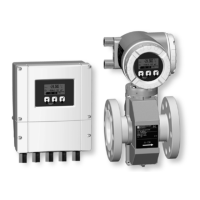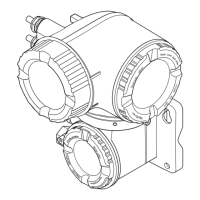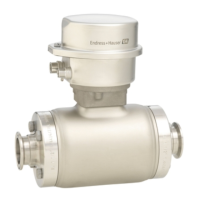Proline Promag 55 PROFIBUS DP/PA Technical data
Endress+Hauser 145
10.1.7 Operating conditions: Installation
Installation instructions ä 13
Inlet and outlet runs Inlet run: typically 5 × DN
Outlet run: typically 2 × DN
Length of connecting cable The permissible cable length L
max
for the remote version depends on the conductivity of the medium
ä 21
10.1.8 Operating conditions: Environment
Ambient temperature Transmitter:
•Standard:
– Compact version: –20 to +50 °C (–4 to +122 °F)
– Remote version: –20 to +60 °C (–4 to +140 °F)
• Optional:
– Compact version: –40 to +50 °C (–40 to +122 °F)
– Remote version: –40 to +60 °C (–40 to +140 °F)
!
Note!
At ambient temperatures below –20 °C (–4 °F), the readability of the display may be impaired.
Sensor:
• Flange material, carbon steel: –10 to +60 °C (+14 to +140 °F)
• Flange material, stainless steel: –40 to +60 °C (–40 to +140 °F)
"
Caution!
Do not exceed the min. and max. temperatures for the lining of the measuring tube ( "Medium
temperature range").
Note the following points:
• Install the device at a shady location. Avoid direct sunlight, particularly in warm climatic regions.
• If both fluid and ambient temperatures are high, install the transmitter at a remote location from
the sensor ( "Medium temperature range").
Storage temperature The storage temperature corresponds to the operating temperature range of the transmitter and
sensor.
Degree of protection • Standard: IP 67 (NEMA 4X) for transmitter and sensor
• Optional: IP 68 (NEMA 6P) for remote version of Promag S sensor
Shock and vibration resistance Acceleration up to 2 g by analogy with IEC 600 68-2-6
(High temperature version: no data available)
CIP / SIP cleaning Promag S:
possible with PFA (note max. temperature)
not possible with PU, PTFE, hard rubber, natural rubber
Promag H:
possible (note max. temperature)
Electromagnetic compatibility
(EMC)
According to IEC/EN 61326 and NAMUR recommendation NE 21

